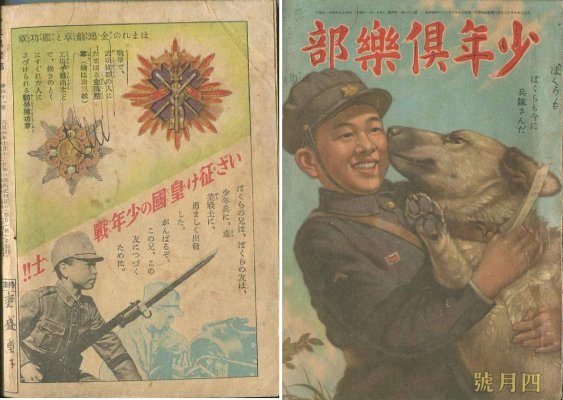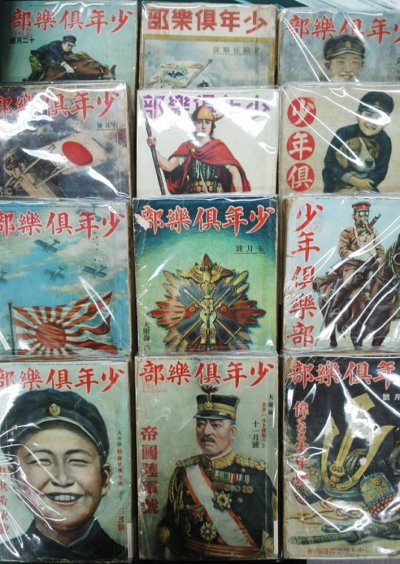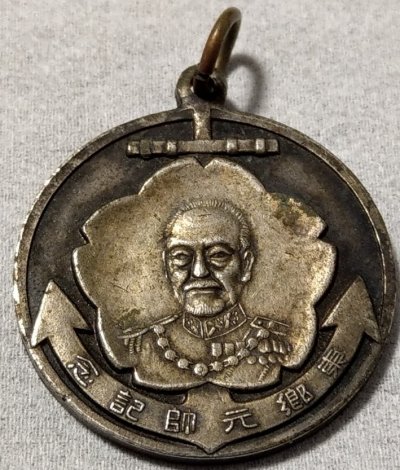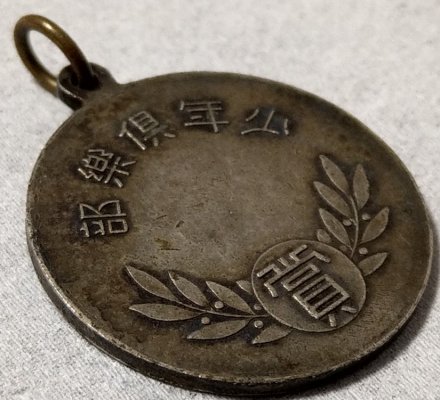"Shonen Kurabu was founded in 1914 and was published until 1962. It was a latecomer compared to other children’s magazines, such as Shonen Sekai (Hakubunkan), first published in 1895, and Nippon Shonen (Jitsugyo no Nihon Sha), which first appeared in 1906. Those two magazines discontinued publication in 1935 and 1938 respectively. It was a leader among children’s magazines until Japan’s defeat in the war. Shonen Kurabu sold 750,000 copies in 1935. The cover of Shonen Kurabu often featured a color scheme of intense red, a boy in military uniform or a smiling boy in school uniform hoisting the Japanese national flag, and literary works featuring brave children with intrepid spirits venturing forth on the Asian continent. The popularity of Shonen Kurabu is confirmed by the greater circulation of Shonen Kurabu compared to that of the literary magazine for children, Akaitori, which featured sensitive, good-hearted children of the petit bourgeoisie, but sold only about 30,000 copies at its peak.
In the early period of the magazine, Shonen Kurabu focused on people’s lives and children’s education. Later, it gained popularity and found success in military adventure fiction during the end of the Taisho and the early Showa eras. The magazine was targeted at the older primary school and middle school students, a stage of development believed to be a time of heightened self-consciousness in which adolescents think over their future and can be influenced by their parents and teachers. Kenichi Kato, the editor prior to Japan’s defeat, recalled the heyday of the magazine, saying: “More important than the circulation size is how the magazine affected readers in the formation of their character”.
In the early period of the magazine, Shonen Kurabu focused on people’s lives and children’s education. Later, it gained popularity and found success in military adventure fiction during the end of the Taisho and the early Showa eras. The magazine was targeted at the older primary school and middle school students, a stage of development believed to be a time of heightened self-consciousness in which adolescents think over their future and can be influenced by their parents and teachers. Kenichi Kato, the editor prior to Japan’s defeat, recalled the heyday of the magazine, saying: “More important than the circulation size is how the magazine affected readers in the formation of their character”.
Exerpt from "Shonen Kurabu and the Japanese Attitude Toward War" by Gijae Seo // Children's Literature in Education, Volume 52 (2021), pages 49–67.




